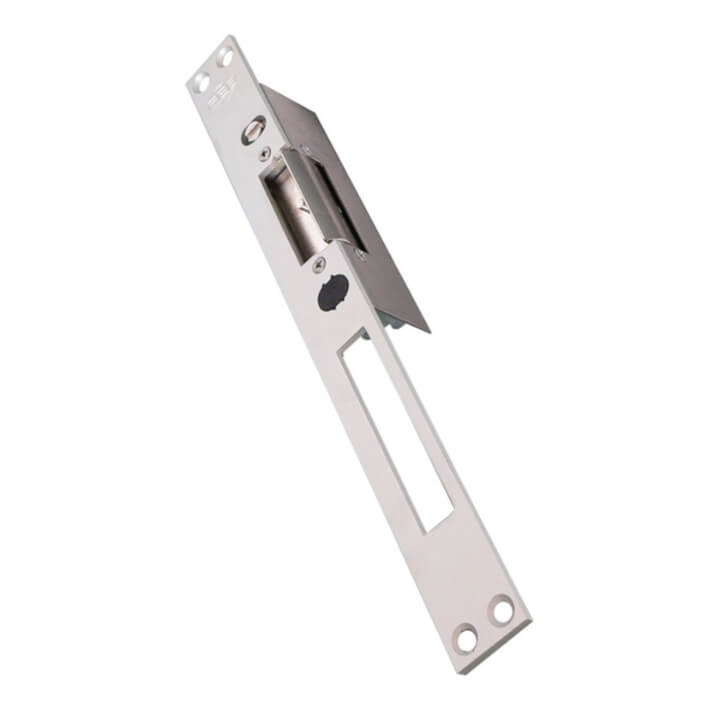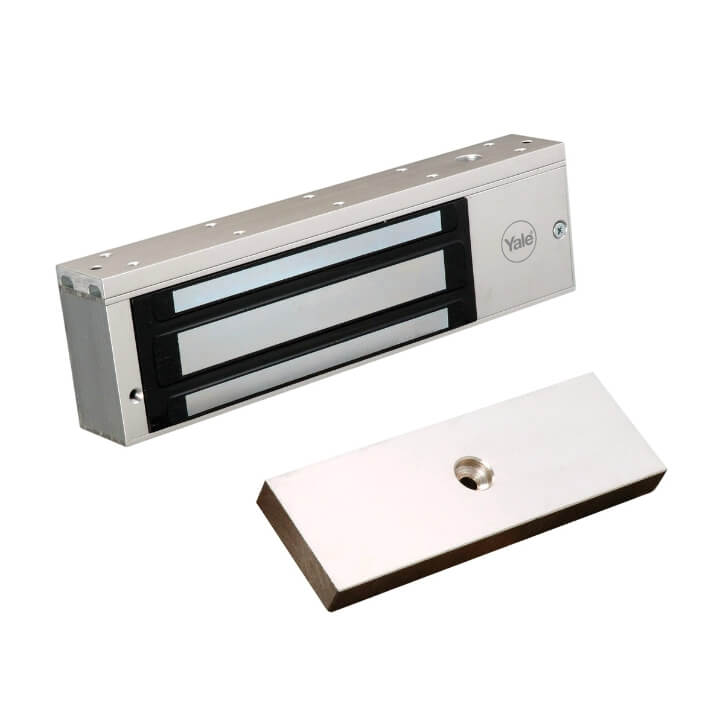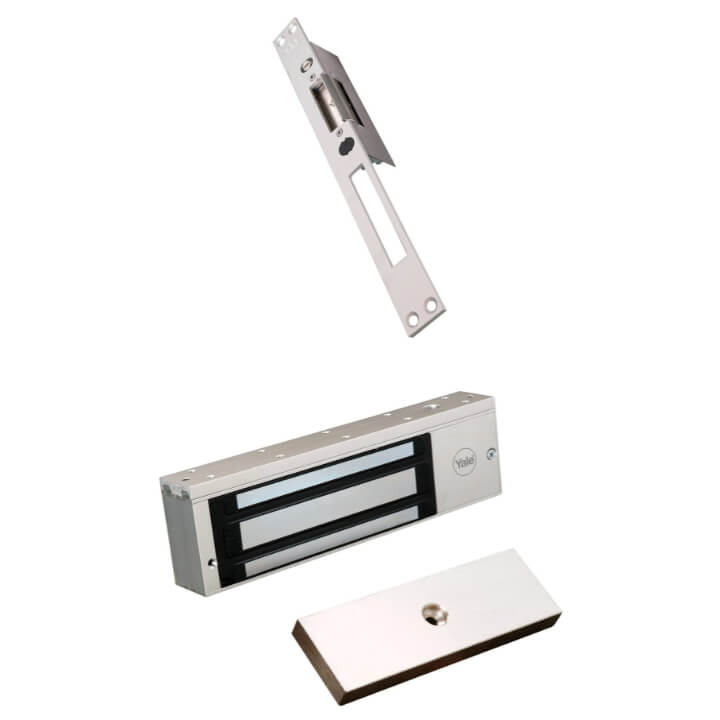Electric strike locks (door strikes) and magnetic locks (maglocks or mag locks) are variations of electromagnetic locks for doors. They are common in commercial properties as part of an access control system using keypads, swipe cards, fobs, and more.
Continue reading to understand the difference between these two types of locks, and how to choose the right one for your building depending on your needs and priorities.
Electric Strike Locks

An electric strike or lock uses a hinged piece of metal to latch the door in place. With the metal piece in the lock position, the door cannot open.
From the outside, the lock requires an electrical signal such as a buzzer, keycard or keypad pin to unlock. This signal triggers a short burst of power supply to move the metal piece, which allows the door to open.
From the inside, you can leave simply by turning the door handle or pushing the panic bar.
Magnetic Locks

A magnetic lock consists of two main parts. A magnet mounted on the door and a metal strike plate mounted on the door frame.
Magnetic locks rely on a constant flow of electric current to remain locked. When the magnet receives current, it generates a magnetic field that keeps the lock engaged, keeping the door closed.
Magnetic locks are always locked from both sides of the door. To open the door, the electric current to the magnet must be cut off. This can be achieved using a card reader, keypad, or key switch, which signals the current to stop, unlocking the door. Any handle or latch hardware on the door is used for opening or closing the door and does not play a role in the locking mechanism.
The Difference Between Electric Strike Locks and Magnetic Locks
The most important difference between an electric and a magnetic lock is what each lock does when there is a power failure. Based on that, electric strikes are generally fail-secure, while maglocks are fail-safe.
During a blackout, an electric lock stays locked because it only needs power to unlock the door. Without power, the electric lock remains locked, keeping priority areas secure by preventing access to the room or building during a power outage. People can still exit using an exit device like a panic bar or crash bar. Electric strikes are generally fail-secure, although some can be configured to fail-safe or fail-secure.
In contrast, a magnetic lock opens during a blackout because it requires power to lock the door. Without power, the magnetic lock unlocks, allowing people to safely enter and exit the room or building during emergencies.
Should You Choose an Electric Strike Lock or a Magnetic Lock?
Choosing the right type of lock for your property depends on the needs of the specific area in the building. One important factor to consider is whether the area requires fail-safe or fail-secure mechanisms.
Electric locks are fail-secure; they stay locked in the event of a power outage. They are ideal for securing high-security areas against unauthorized access during emergencies. IT server rooms, package rooms, or inventory closets are areas that you might secure with electric strikes.
Magnetic locks are fail-safe; they unlock in the event of a power failure. They should be installed on doors that people will use to exit the building in an emergency. For example, magnetic locks are suitable for use in stairwells, entryways, and rooftops.
We hope this post has helped clarify electric strikes and magnetic locks. Want to chat about your property’s electromagnetic door locks? Please get in touch with the friendly and professional security experts at South Perth Locksmiths.


